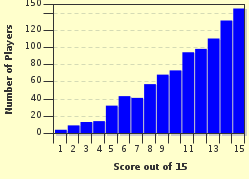Quiz Answer Key and Fun Facts
1. Let's start with the basics. The capital city of peninsular Spain is the second-highest capital city in Europe. What is it?
2. Heading northeast, we'll arrive at the capital of Aragon. This city with complex cultural histories sits on the majestic (and sometimes muddy) Ebro River. Name it.
3. Heading north from this capital, we'll go to the city which is the capital of the Basque Country. Which city is home to medieval churches and modern museums?
4. Heading southwest in the direction of Andalusia, which city is the capital of the most tourist-attracted region of Spain? It is famous for the Giralda tower, the Torre de Oro, and sevillanas. The city has achieved lasting importance due to its location on the Guadalquivir River.
5. Also in Andalusia, which city is home to the famous Alhambra Palace, the Albaicin quarters? This city sits at the foot of the snow-capped Sierra Nevada Mountains. It was itself, for a time, capital of the Moorish Empire in Spain.
6. Heading southwest from our previous Andalusian capital, Granada, which city is home to Tio Pepe, one of the world-famous brands of dry sherry?
7. Name the capital of Extremadura, known for its extremely flat terrain.
8. What is the capital of the fertile area of Cantabria, famous for its beach and promenade?
9. At the very northwestern point of Spain, there is a region called Galicia. This area was home to Francisco Franco. What is the name of its capital, which was named a UNESCO World Heritage Site?
10. The Navarre region is kind of tucked away. What world-famous city, which hosts the San Fermin festival, is the capital of this area?
11. Now, for a question about the bodies of water surrounding Spain. What body of water is at the north of the Iberian Peninsula?
12. What body of water is adjacent to the cities of Cadiz and Huelva?
13. Approximately what is peninsular Spain's size?
14. What is the capital and main seaport of the beautiful Baleares Islands?
15. What is the capital of Asturias, famous for its monasteries and cathedrals?
Source: Author
Windswept
This quiz was reviewed by FunTrivia editor
Pagiedamon before going online.
Any errors found in FunTrivia content are routinely corrected through our feedback system.

